You can tell your pet isn’t feeling well, but you don’t know how to help. It’s a rotten feeling! Checking some basic wellness measurements can help you figure out what’s causing your pet’s discomfort and get him feeling better.
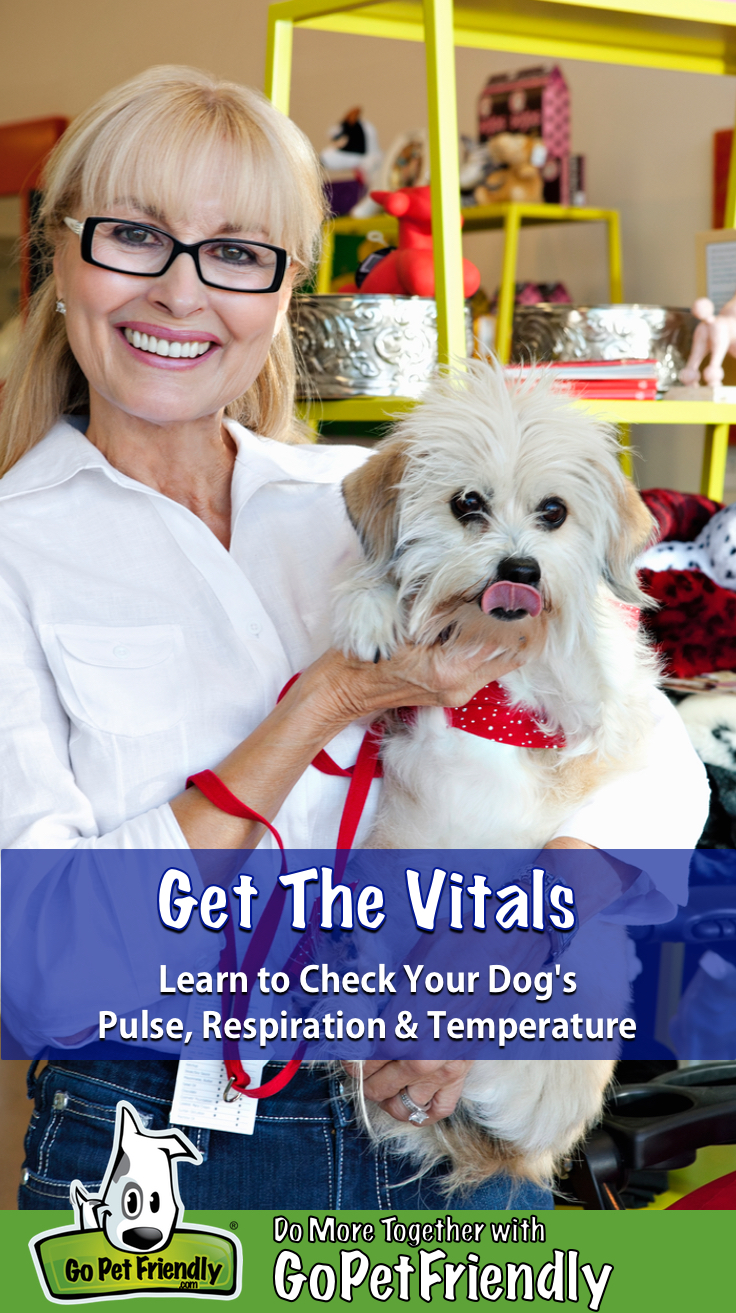
Every pet owner knows that feeling … when your pup isn’t himself, but you’re not sure if he’s seriously sick. Simply learning to check your dog’s pulse, respiration, and temperature can help you assess his degree of pain, injury, or illness. And that can help you decide on a proper course of action to get him feeling better.
Taking and recording these measurements when your dog is healthy gives you a baseline to know when something isn’t quite right. The difference between your dog’s normal readings and what he’s experiencing when he’s unwell might lead you to seek professional medical help.
READ MORE ⇒ What You Should Know About Emergency Vets (Before You Need One)
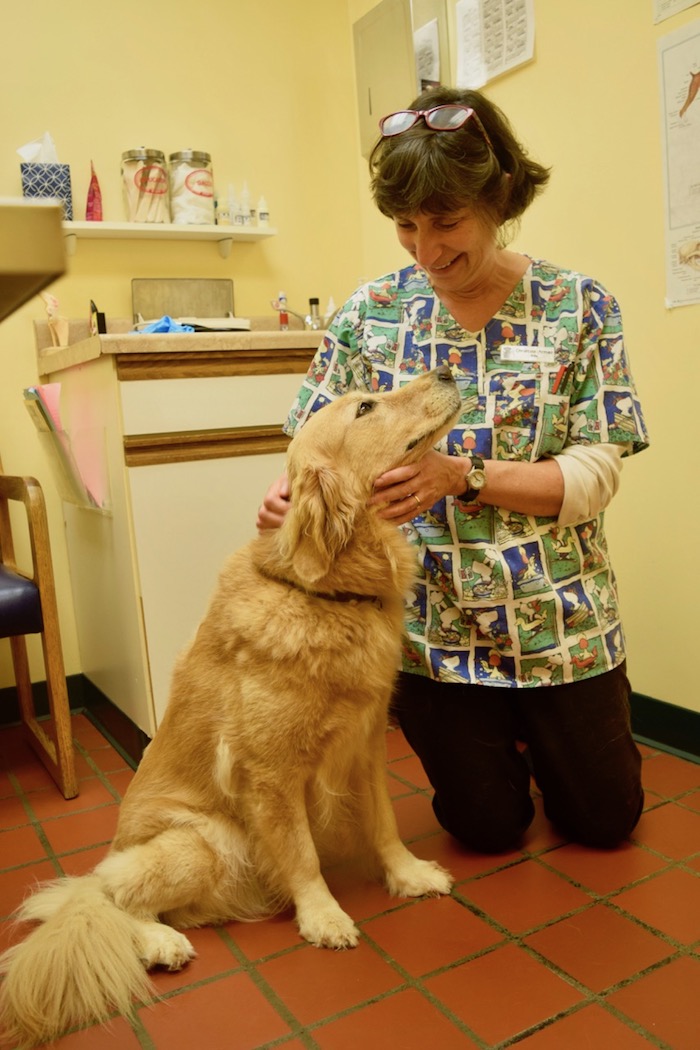
Checking Your Dog’s Vital Signs
The basic vital signs to check are your dog’s pulse, respiration, temperature, and capillary refill time. We’ll explain what they are and how you measure each one.
Respiration
To determine your dog’s respiratory rate, you’re simply counting the number of breaths your dog takes in a minute. To determine your dog’s respiratory rate, follow these steps:
- Observe or place your hand over your dog’s chest to count the number of times the chest rises (inhales) and falls (exhales). Each rise/fall combination counts as one breath.
- Count the breaths for 30 seconds and multiply by two to get the respiratory rate in breaths per minute.
A normal respiratory rate for small dogs is between 20 and 40 breaths per minute. Larger dogs will have a slower respiratory rate, usually between 10 to 30 breaths per minute.
Dogs in distress could breathe faster or slower than their normal rate. For example, dogs in pain or with a fever might pant (breathe faster than normal). And a dog whose respiratory rate has decreased significantly could be in shock.
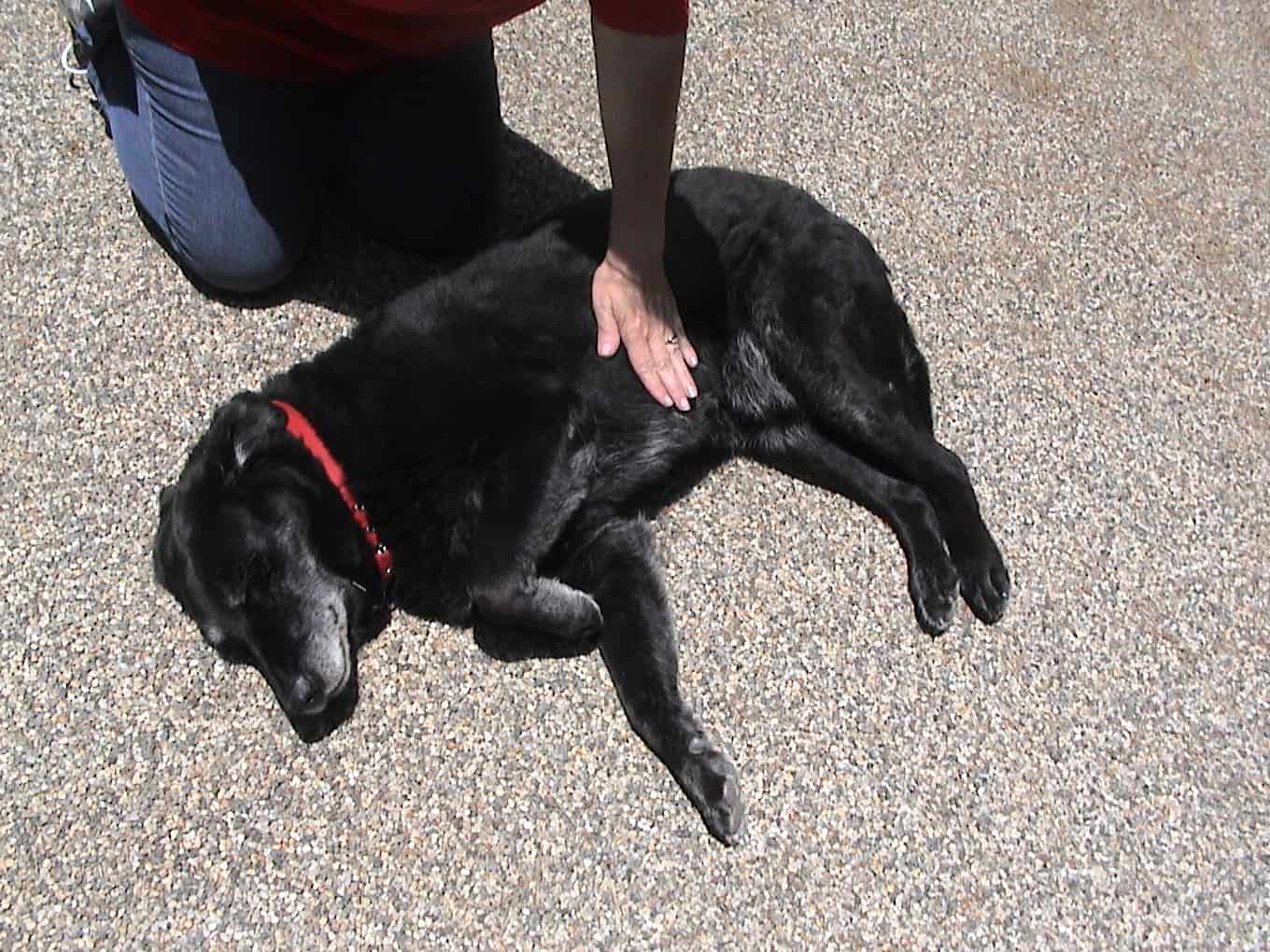
Temperature
Your dog’s body heat cannot be accurately gauged by feeling your dog’s nose or belly. To get a good measurement, you’ll need a digital thermometer. One made for humans is fine, just be sure you keep your dog’s thermometer in a separate place from others in your home. You wouldn’t want to grab the wrong one in a feverish haze!
To check your dog’s temperature, follow these steps:
- After lubricating the tip of a digital thermometer with a petroleum or water soluble jelly, move your dog’s tail up and to the side to prevent him from sitting.
- Insert a thermometer ½”-1” into the dog’s rectum and wait for the thermometer to beep, according to instructions.
Your dog’s temperature should be between 100.4° F and 102.5° F (38° C-39.16° C). But, just like humans, dog’s normal temperatures can vary, and even be different at different times of the day! So it’s important to know your dog’s healthy temperature for comparison.
Fluctuations in your dog’s temperature (either up or down) can be serious. If your dog is experiencing either a higher than normal or lower than normal temperature, it’s best to phone your veterinarian to discuss the appropriate treatment.
READ MORE ⇒ Symptoms of Fever in Dogs

Pulse
Your dog’s pulse is the rhythmic movement of blood through his arteries. As his heart beats, the blood flows (pulses) through the vessels. You can measure your dog’s pulse by following these steps:
- Place the ball of two fingers (not your thumb) on the depression found in your dog’s inner upper thigh, over the Femoral artery. It might take a little searching around to find it the first time – don’t give up!
- For smaller pets, placing your hand over the left side of the dog’s chest just behind the elbow might also allow you to feel the heartbeat.
- Count the beats for 30 seconds and multiply by two to get the pulse rate in beats per minute.
The normal pulse rate for small dogs will range between 90 and 160 beats per minute. Larger dogs will have a lower normal pulse rate, usually between 65 and 90 beats per minute.
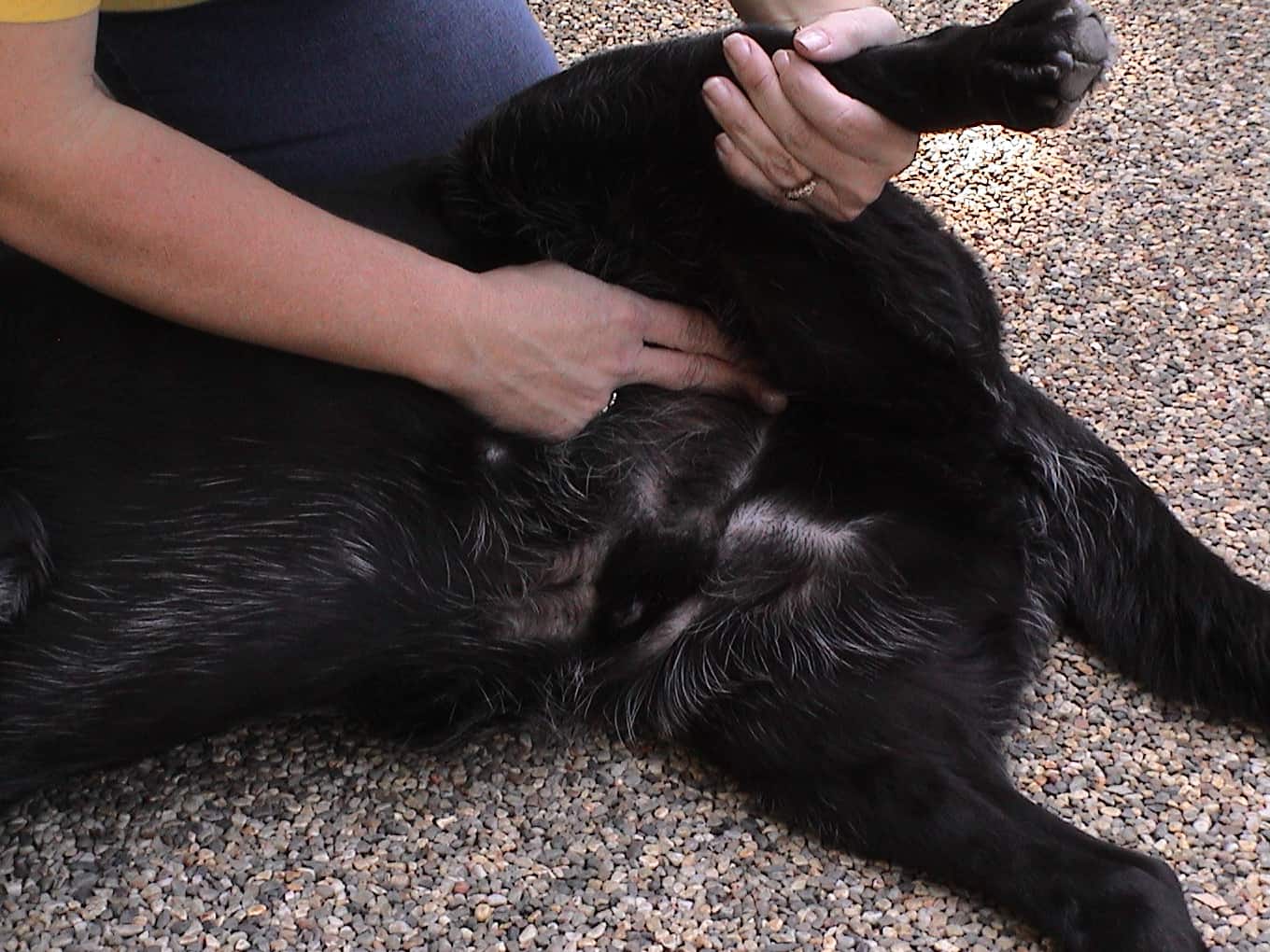
Hydration
We all know that dehydration is a serious condition that affects pets as well as humans. Here we’re measuring the moisture in your pet’s body, which should be about 70% of his body weight. Follow these steps to determine if your pet could be dehydrated:
- Carefully lift your dog’s lip/flews at the side of his mouth. (Lifting from the front of the mouth is uncomfortable for many breeds).
- If the gums are sloppy wet, he is well hydrated. But if his gums are dry or sticky he may be slightly dehydrated. Encourage him to drink.
- If your dog’s gums are dry or sticky, his eyes are sunken, his skin remains in a peak when gently grabbed at the shoulders, or he’s lethargic, your pet could be severely dehydrated and in need of immediate veterinary care.
READ MORE ⇒ Recognizing Dehydration and Heat Stroke in Dogs
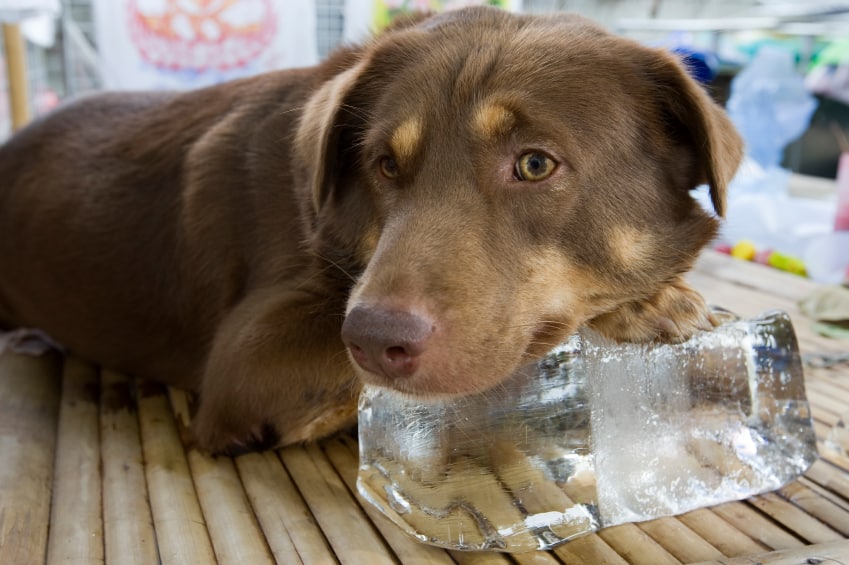
Capillary Refill Time (CRT)
To check your dog’s circulation, you’ll need to determine his capillary refill time. This is measured by following these steps:
- Again, carefully lift your dog’s lip. Then press gently on top gum above the teeth with the ball of your finger until gum turns white.
- When you release the pressure, the color should return to the gums in 1-2 seconds. Capillary refill time indicates whether your dog’s circulation is sufficient to send blood to his extremities.
If it takes longer than 2 seconds for color to return to your dog’s gums, your pet needs immediate veterinary care. As you drive him to the vet, cover him with a light blanket to preserve body heat. If he’s not bleeding from an injury, you can also slightly elevate his hind quarters to promote circulation to his vital organs.
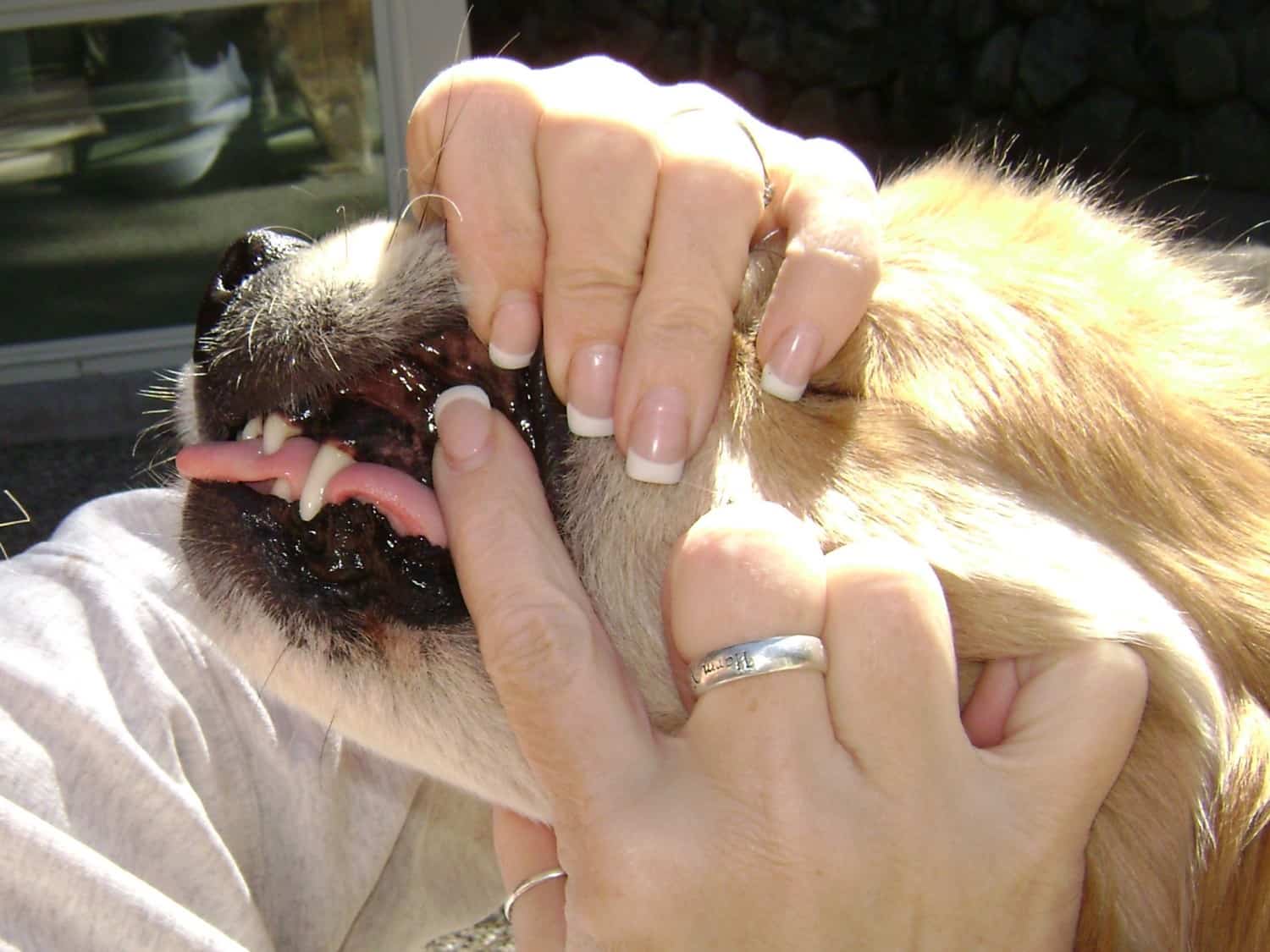
Gum color is also a good indicator of overall health. Gums that are pink indicate a normal, healthy pet (unless the gums normally have a dark pigment). Pale or white gums could indicate anemia, blood loss, or poor circulation. Blue or grey gums could indicate lack of oxygen. And yellow gums could indicate liver disease or zinc toxicity. In any of these last three cases, your pet needs immediate veterinary care.
Weight
Your pet’s body weight is another important factor in determining his health. Specifically, be on the lookout for sudden increases or decreases in your pet’s weight.
- For large dogs, body weight is best measured on the scale at your veterinarian’s office.
- Small dogs can be weighed on your bathroom scale. Hold your dog and note your combined weight. Then immediately set you dog down and weigh yourself. The difference between the two is your dog’s weight.
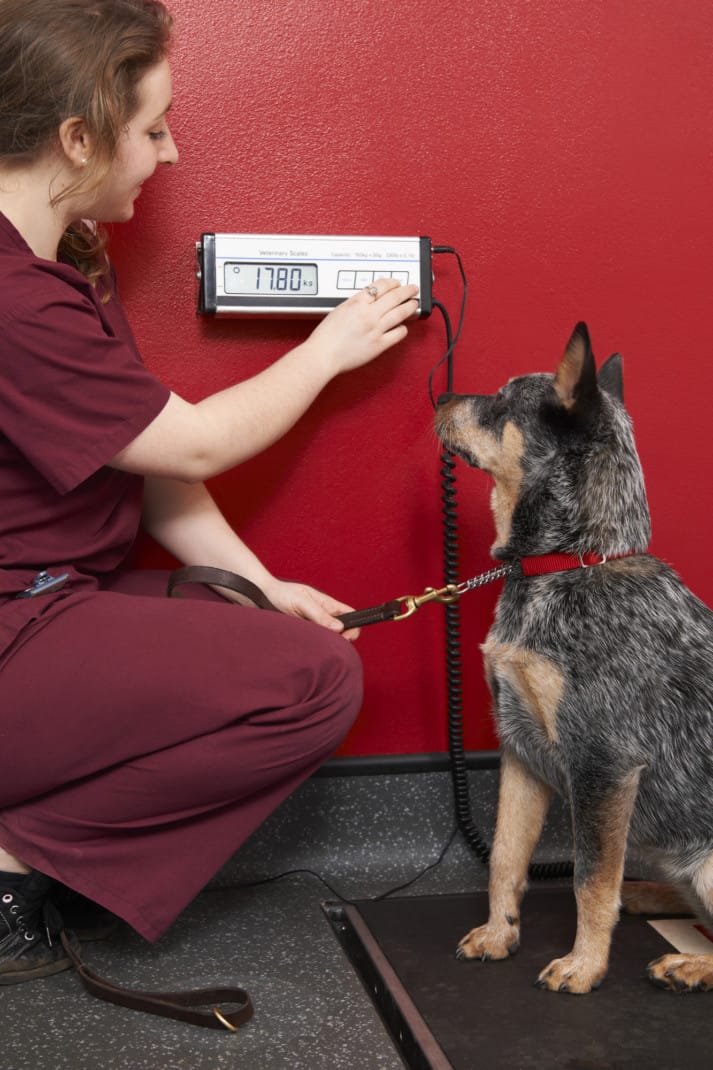
Knowing your dog’s precise weight is imperative before administering treatment or medication. The smaller the pet, the more critical it becomes. Even being off by a pound could result in an overdose.
Unfortunately, so many pets are overweight that it can be difficult to recognize a dog’s healthy body shape. It might be easer for you to judge by feel.
If your dog is at a health weight, you should be able to feel his ribs but not see them. (Of course, super-lean breeds like Greyhounds and Ridgebacks are an exception.) When viewed from the side, your dog’s belly should tuck up higher than his chest. And, looking down at your dog’s back, you should see a slight waistline. If you think your pet may overweight, speak with your veterinarian about a healthy way to help him drop some pounds.
Knowing what’s normal for your pet will help you determine when something isn’t right. So practice checking your dog’s pulse, respiration, and temperature and keep track of the results. Then, whether it’s an allergic reaction, injury, or illness, you’ll be prepared to assess your dog’s condition and help him recover quickly.

About the Author: Denise Fleck has trained with 12 national animal organizations and has taught more than 10,000 pet lovers animal life-saving skills. She’s developed courses, written nine books, and created a line of pet first aid kits and posters so people can help their pets BEFORE veterinary care can be reached.











Thanks. Our 1 ½ yr Cavalier is lethargic and normal very energetic, and it’s 2 am so hard to know what to do. Rest 32, pulse 80.gums pink, a bit dehydrated (based on your information). I will sit with him tonight and see the vet tomorrow – thanks for your help. I am racking my brain to understand why – he was with me all day.
Hi Ron. I’m glad you found the post helpful and I hope your pup is feeling better today!
Maybe you could give a little less of a range when someone is trying to figure out if their dog is literally on their last breath and you give a range of 10 to 30 bpm will if it’s 10 bpm you’re saying that that’s OK then? Not helpful at all thank you for nothing
Hi Jessica. Thanks for your note. Like humans, each dog is a little different. And different breeds of dogs have normal ranges for these measurements that vary widely. That’s exactly why it’s so important to determine what is normal for YOUR dog when they’re feeling well and write it down. I wish you the best of luck.
Actually as a parent of various dogs throughout my entire life, and currently with one that has congestive heart failure, this information is extremely helpful. I’m pretty sure in the article she does suggest that you know what is normal for your own dog/car
T and keep a log/record/journal of it. That way if you know what iyour pets normal range is. I would say that is what any professional would say with anyone or any living thing. I know one of my daughters will be hardly able to move at all and constant whining, etc. but if I get her temperature it will be up maybe a few degrees. On the other hand, my other daughter had yoi not checked it you would probably never even know she had a fever, she would be running around, happy as could be with a temperature of 103!! I don’t recall anywhere that the author wrote or suggested 10 bpm could ever be considered ok, maybe what you wrote is a bit confusing. She gave a “general range” of what would be considered “normal” just like humans – I think we all know what the “normal temperature “should” be but in all reality if you ask any medical professional they will tell you that a temperature is not truly considered a fever until it goes over 100 degrees. So as with animals there is a little plus/minus with everything. I know most people aren’t like me with my planner obsession but I use multiple planners and I prefer ring bound planners, in all my planners I have a section for other family members as well as our dog and I keep all important information in there which now does include a daily log of my dogs heart beat and her respiration. Recently we had to go to one of our local emergency veterinary hospitals and it was an all day thing so I was just happy she was coming home and all things considered I was figuring it would be close to $5,000 out of my pocket but it was a little less than half that, so once paid I just wanted to get home plus the place was so busy, I didn’t expect the doctor to be standing by to explain any more details than she already did. It wasn’t until we got home that I looked at the discharge information because she had told me the cardiologist made adjustments to all of her meds, so I read everything and in the instructions it specially said to keep a log of my dog’s resting heart rate as well as her respiration. Having this could mean a lot for my dog because it said by keeping a log we might be able to see any negative trends going on that we might not have noticed before, she also added to give her an extra dose of one of the meds if we do notice this happening before leaving for the cardiologist or the emergency room. I know I can go in to the normal vet and find out the best way to get the best most accurate reading but rather than use more of the drs important time and pay even more money coming to this site and reading this article gave me all the information that I need.
Either way, maybe you don’t realize he costs can add up so quickly, the fact this person is setting up this site to ultimately help people and save them time and money, I think you could really benefit from a lesson on gratitude and the old lesson – if you don’t have anything nice to say, don’t say anything. It is your pet, it is your responsibility to get familiar with what their normal ranges, not a professional who has never even met your pet.